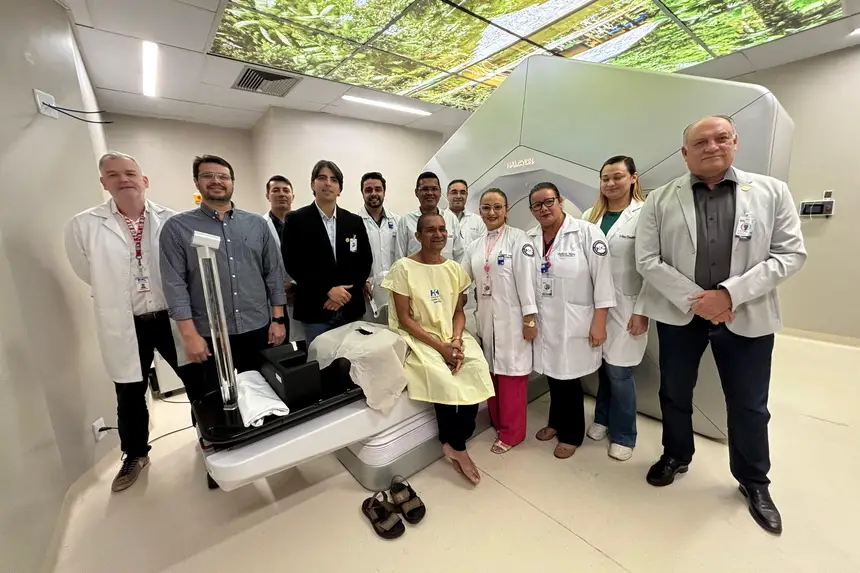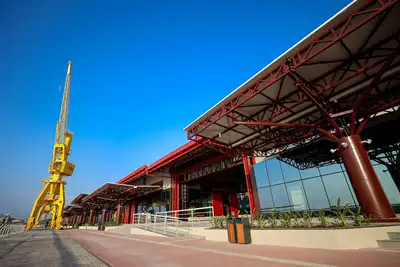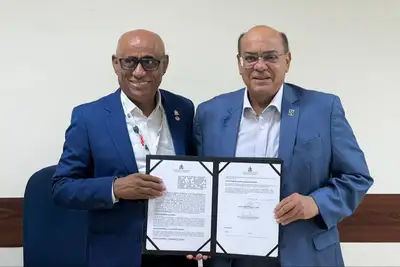Ophir Loyola performs first stereotactic radiosurgery through SUS in Pará
Pioneering procedure, without cuts, renews the hope of patients with brain tumors and marks a new advance in oncological treatment in the state
The guard Edvaldo dos Prazeres, 49 years old, was the first patient to undergo stereotactic radiosurgery at the Radiotherapy Center of the Ophir Loyola Hospital (HOL) this Thursday (17). The minimally invasive technique allows for the application of a single and precise dose of radiation, without the need for cuts, reigniting the hope of the resident of Moju, who had already undergone four surgeries to treat an atypical meningioma — a benign brain tumor with recurrence after previous removals.
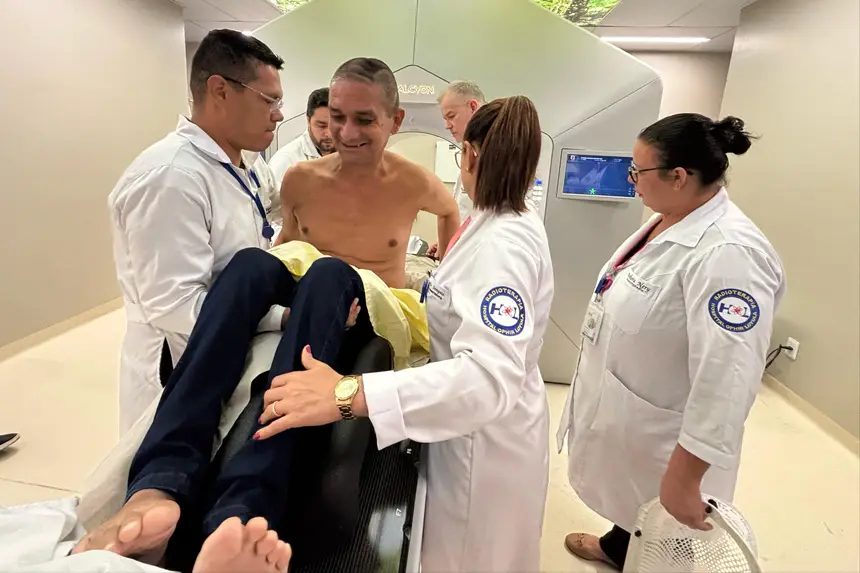
The procedure was performed on one of the Halcyon™️ linear accelerators – Varian, acquired by the State Government last year. Considered the most modern in terms of precision, speed, and quality for radiotherapy, the equipment consolidates HOL as a reference in oncological treatment in the North region.
“First of all, I put everything in God's hands and then in the hands of the doctors. Everything will be fine, I have faith in that,” said Edvaldo, confident. “I received all the guidance from the medical team and I know how the procedure was performed. I am very excited. Even being the first to go through this, I feel safe.” After the therapeutic intervention, he returned home the same day.
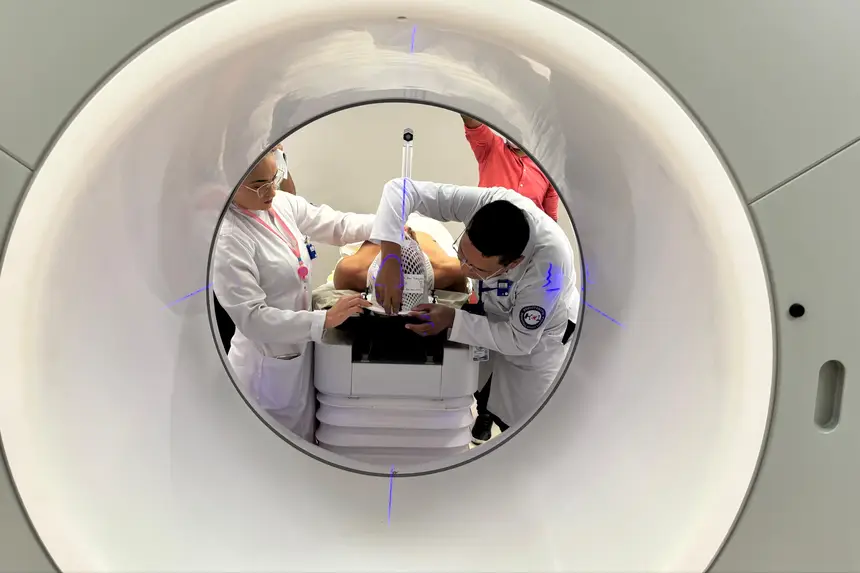
Radiosurgery dispenses with craniotomy (surgery involving opening the skull) and allows the patient to be discharged on the same day, with little or no significant side effects. The treatment can be done in one, three, or even five sessions, depending on the dosage and size of the lesion. During the procedure, the patient is immobilized with a mask while high-power radiation is applied directly to the lesion with high precision. Recovery is usually quick, and the impact on the patient's routine is minimal.
“This is an important milestone for all of us. Performing this procedure with excellence reinforces our commitment to innovation, patient safety, and humanized care. Each advance like this is the result of a lot of work, dedication, and competence from our team. It is a pride to see the service consolidating as a reference and transforming lives with technology and precision,” highlighted the general director of HOL, Heraldo Pedreira.
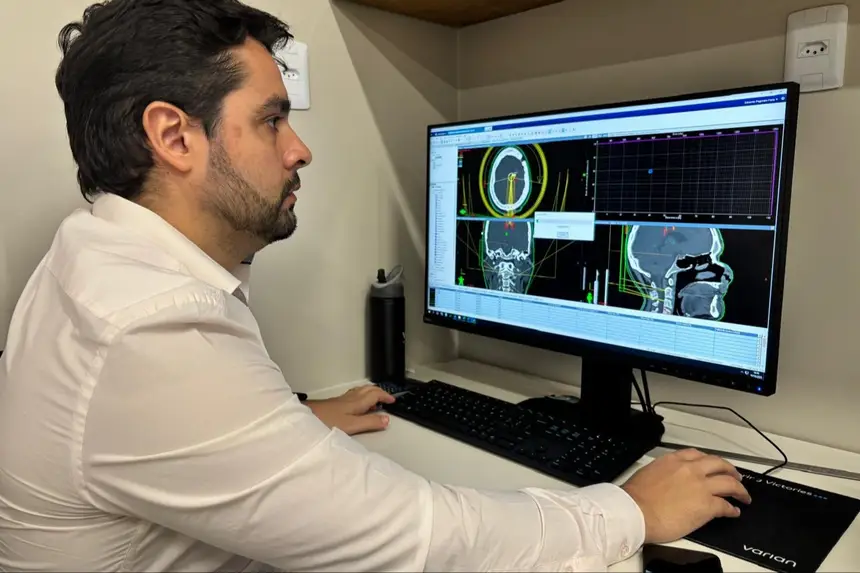
Radio-oncologist Dionísio Bentes explained that the technique is an effective alternative to conventional surgical procedures, using a high dose of ionizing radiation on small lesions. “We concentrate a dosage of 1,500 centigray in a short interval, with millimeter precision, which characterizes stereotaxy. We locate the lesion accurately and with a safety margin, protecting noble areas of the central nervous system, such as those responsible for motor, cognitive, and memory functions. This makes the technique safe and effective,” he detailed.
According to the specialist, the patient undergoes prior preparation, with updated imaging exams, such as magnetic resonance imaging.
“In radiotherapy, we perform a simulation tomography with thin slices that allows us to outline the tumor volume. Then, we merge the images from the resonance with those from the tomography to accurately locate the exact point of the lesion. This way, we ensure that the high dose of radiation hits the right area safely,” he added.
The medical physicist Eduardo Faria explained that, since it is a procedure with a high dose of radiation, quality control is rigorous.
“Even after approval in the initial test, we repeat the entire process twice to ensure maximum safety. The equipment has an internal system that compares the planned dose with the applied dose, in addition to having external devices, such as ionization chambers and planar detectors, to reinforce the precision in delivering the radiation beam,” he explained.
He also highlighted the action of ionizing radiation on the tumor:
“Radiation acts in two ways: directly, by breaking the DNA of the tumor cell, and indirectly, by breaking water molecules and generating free radicals that also destroy these cells. It is the combination of these actions that makes radiosurgery so effective,” Faria stated.
Advancement in services
Since March of this year, when the HOL Radiotherapy Center received the operating license from the National Commission of Nuclear Energy (CNEN), nearly 200 patients have completed their treatments. The authorization, granted by the agency linked to the Ministry of Science, Technology, and Innovation (MCTI), allowed the service to be operational just two hours after the release.
According to radiation oncologist Cláudio Reis, the hospital recorded a significant increase in productivity. “Between March 17 and April 16, about 200 patients completed external radiotherapy and another 220 started their treatments. We also performed approximately 160 monthly brachytherapy insertions, which correspond to about 50 patients treated per month, as each treatment involves three to four sessions,” he stated.
According to him, the expectation is that this number will increase even more. Currently, only one of the linear accelerators operates full-time. The second operates part-time. “With the hiring of new professionals and the expansion of shifts, we estimate to reach 240 patients per month in teletherapy, in addition to those treated by brachytherapy, totaling about 300 monthly procedures,” he informed.
Reis also emphasized that the growth of the service is not only numerical but also technical. “The advancement is not only in quantity but in the complexity of treatments. We are dealing with more challenging cases, using advanced techniques such as IMRT, IGRT, RapidArc, and VMAT, which require a high technical level from the entire team — doctors, physicists, and technicians,” he said.
“It is a very significant growth that places us among the largest services in Brazil. Few institutions reach this volume of care, such as Inca, A.C. Camargo, Barretos Cancer Hospital, and Fortaleza Hospital. It is undoubtedly a great source of pride for all of us,” he concluded.


